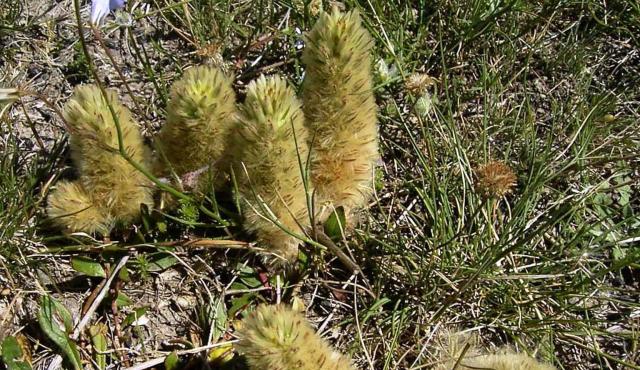A range of teacher professional learning programs will be developed to accompany the Biodiversity of the Western Volcanic Plains online outreach...




Pussy Tails
Ptilotus spathulatus
Perennial with woody rootstock. Widespread in dry grasslands but not common.
| Details | Description |
| Type | Herb |
| Group | Pussy-tail |
| Former Scientific Name | Ptilotus spathulatus f. spathulatus |
| Identifying Characteristics | |
| Distinctive Features | Dark green, spoon-shaped leaves. Fluffy flower heads up to 7 cm long, held at the ends of stems up to 6 cm tall. |
| Life Form Group | Herb |
| Life Form Codes | Small or Prostrate Herb (SH) |
| EVC types | EVC 132_62: Lighter-soils Plains Grassland EVC 132_63: Low-rainfall Plains Grassland EVC 803: Plains Woodland |
| Native Status | Native to Australia |
| Taxonomy | |
| Phylum | Charophyta |
| Class | Equisetopsida |
| Order | Caryophyllales |
| Family | Amaranthaceae |
| Genus | Ptilotus |
| Species | spathulatus |

Distribution maps indicate current and historic locations where species have been sighted.
Source: Atlas of Living Australia
| Endangered Status | |
| DEPI Advisory List | Not listed |
| FFG Act | Not listed |
| EPBC Act | Not listed |
The conservation status of species is listed within Victoria and Australia.
The Department of Environment and Primary Industry (DEPI) Advisory List consists of non-statutory advisory lists of rare or threatened flora and fauna within Victoria.
The Flora and Fauna Guarantee Act 1988 (FFG Act) lists threatened species in Victoria. Under the Act, an Action Statement is produced for each listed species.
The Environment Protection and Biodiversity Conservation Act 1999 (EPBC Act) is the Australian Government’s key piece of environmental legislation, listing nationally threatened native species and ecological communities.



